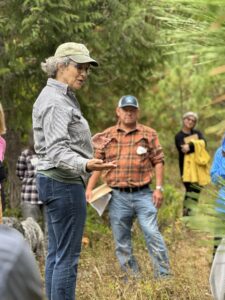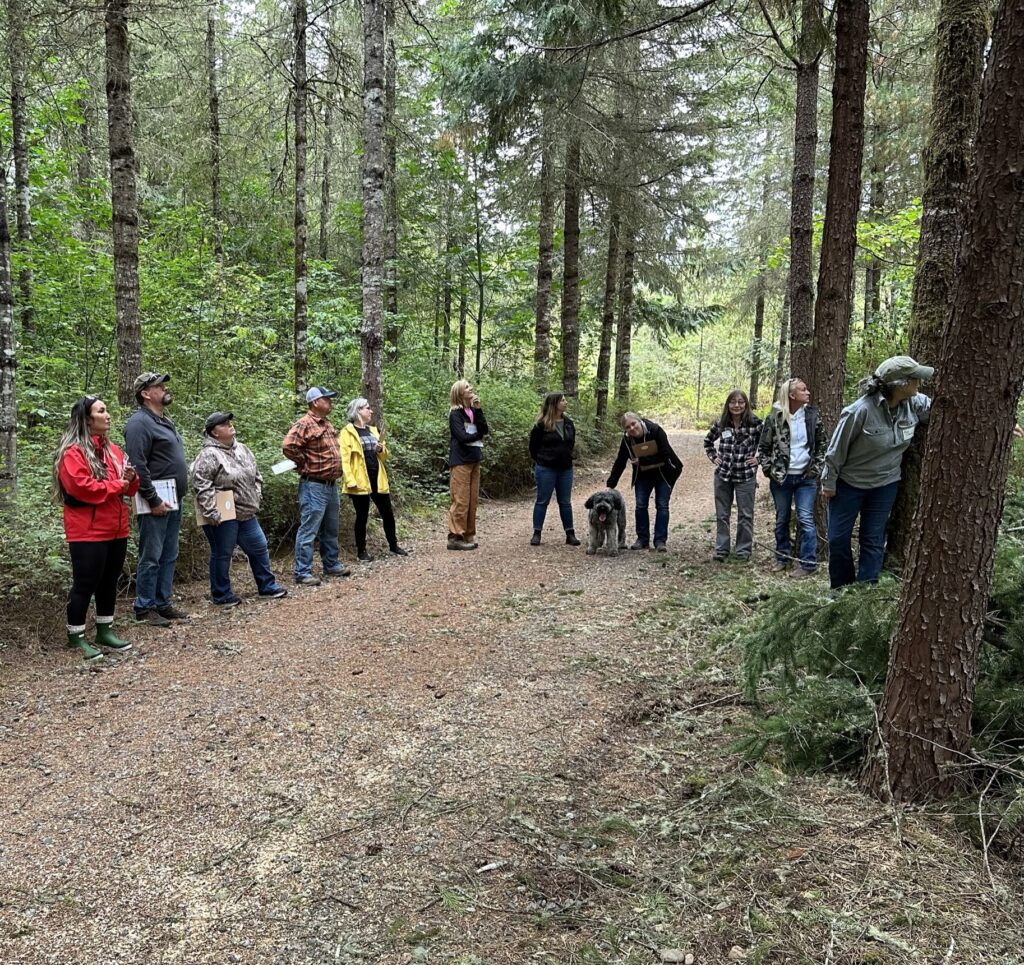Pacific Education Institute (PEI), Washington Department of Natural Resources (DNR), Sierra Pacific Industries (SPI), Cowlitz Ridge Tree Farm, and other community partners participated in the second workshop for Engaging Communities in Forest Education in the South Sound/Lower Columbia Region in the beginning of August!

This workshop took a similar format to the first and had a ton of learning packed into two days that flew by. The workshop began in Centralia, WA, with PEI coordinator, Lara Tukarski, leading the Project Learning Tree (PLT) activity ‘Viewpoints on the Line,’ followed by a panel discussion including Lisa Perry and Jacob Graham from SPI, Steve Ogden, Dave Sund, and Jacob Vaughn with WA DNR and Margaret Kreder from Mason Conservation District.
During the panel discussion, participants learned how and why forests are managed on state lands. The focus was on the application of the WA state forest practice rules and the relationship between private and state-regulated forests.
“I realized that there is so much thought, and careful planning based on science that dictates what trees are removed, what trees are left where and why.”
— Workshop Participant
The 19 participants, two PEI coordinators and community partners then traveled to an active DNR logging harvest site nearby being logged by SPI where they donned high visibility safety gear. Participants witnessed tethered logging over a steep slope and learned about leave trees, riparian management zones, when trees have optimal carbon storage and how all those factors are considered during the management plan and harvesting process. The sale of this particular site was especially exciting because a portion of the revenue goes directly to a few local school districts through the selling of bonds.
After a quick lunch at Fort Borst Park, the group toured the Sierra Pacific Industries Mill in Centralia. During the tour, one big takeaway from several educators was the amount of technology used in a mill. In addition, participants learned about careers provided by SPI, the lumber production process, the history of the business, andthe role of the mill in the community.
The workshop’s second day took place completely at Cowlitz Ridge Tree Farm, a Family Forest owned by the Stinson Family in Toledo, WA. It

began with Tom Shorey of Fruit Growers Supply Company sharing about the Sustainable Forestry Initiative. Participants also learned the history of the Cowlitz Ridge Tree Farm and got a tour of the property led by Ann Stinson and her father, Doug Stinson.
The tour consisted of different aged stands of trees highlighting the importance of species diversity and early stand management as critical elements of management decisions made by the tree farm. On the tour, participants filled in a PLT activity noting diversity on the student page of “Field, Forest and Stream” and thought about how they could implement the activity in their own classroom.
After lunch, participants then got the distinct pleasure of engaging with Ken Bevis, Stewardship Fish and Wildlife Biologist with the WA DNR about his work using habitat as an indicator of forest health, the importance of biodiversity/habitat on forestlands and managing habitat for protected species. This includes listening to songs “King of the Woods” and “TrueBear Song” written and performed by Ken himself!
Patrick Mahoney, a Forest Resource Management Instructor at Grays Harbor College, showed the educators how to measure tree height using a clinometer and how to figure out their own pacing distance.
During the last part of the day, they got to dive a bit deeper into the PLT guides provided by Family Forest Foundation. They thought about how they might make a forest management plan with the activity “If You Were the Boss” and explored looked at forest health indicators on a plot of land using the “Monitoring Forest Health”
activity.
After taking part in the activities, the educators discussed how they can use the PLT activities in their classrooms, with their students.
